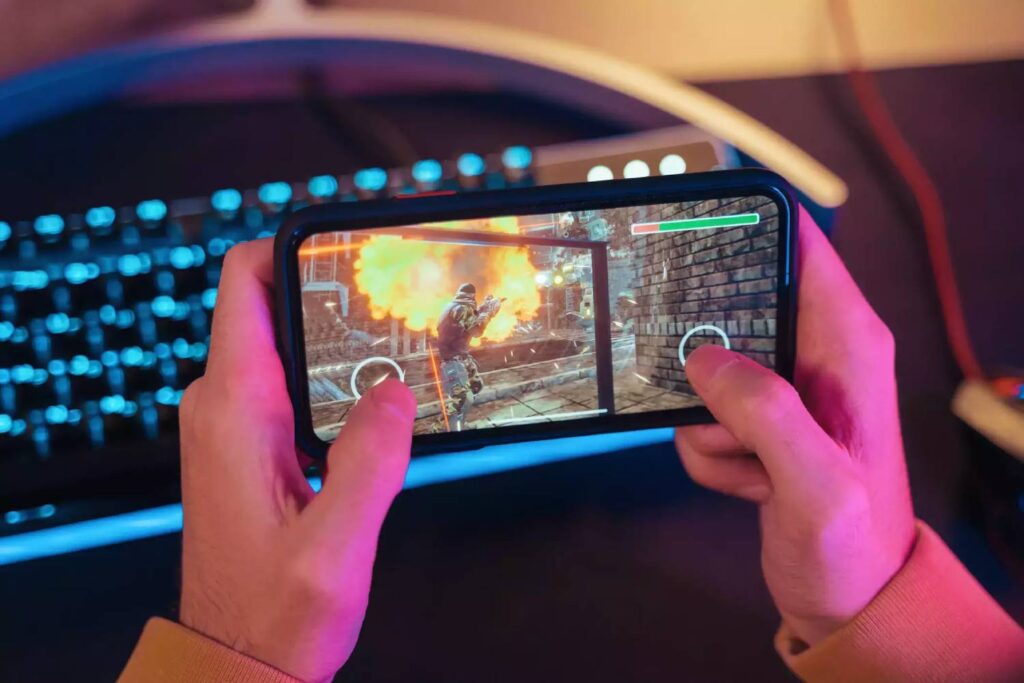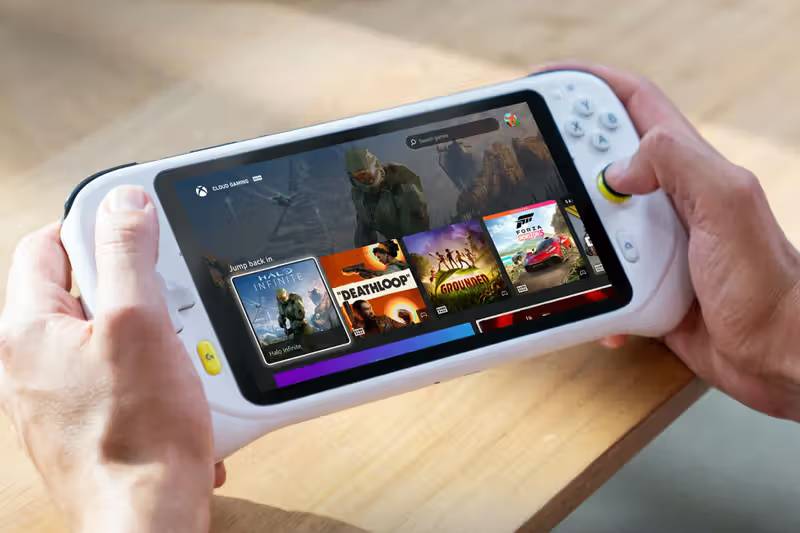The Gaming Blog

Cloud Gaming vs Traditional Gaming: Is the Future Fully Digital?
The gaming industry is undergoing a significant transformation with the rise of cloud gaming. Traditionally, players needed strong gaming consoles or high-end PCs for the latest titles. Now, cloud gaming services provide an alternative. You can stream games directly from the cloud without needing costly hardware. This shift raises an important question: is the future of gaming fully digital?
In this cloud gaming comparison, we’ll look at the top cloud gaming services. We’ll also discuss the pros and cons of game streaming. Finally, we’ll consider if traditional gaming is fading away for an all-digital future.
Understanding Cloud Gaming
1. What is Cloud Gaming?
Cloud gaming, also known as game streaming, allows players to access and play video games over the internet without downloading or installing them on a physical device. Instead, games are run on remote servers, and the video feed is streamed directly to the player’s device, whether it’s a PC, console, smartphone, or smart TV.
2. How Does Cloud Gaming Work?
- Game servers: The game runs on powerful remote servers maintained by cloud gaming providers.
- Streaming technology: The gameplay is streamed in real-time to the player’s device, much like watching a video on Netflix.
- Internet dependency: A strong and stable internet connection is required for smooth performance and minimal lag.
- Device flexibility: Since the processing happens in the cloud, even low-end devices can run high-end games without performance issues.
- Controller support: Many cloud gaming platforms support external controllers, keyboard and mouse, or touchscreen input for flexible play.
Best Cloud Gaming Services in 2025

Several platforms are leading the way in cloud gaming, each offering unique benefits and subscription models.
1. NVIDIA GeForce Now
- Allows users to stream their existing PC game library.
- High-quality graphics with support for ray tracing.
- Offers free and premium subscription plans.
- Supports up to 4K resolution with high refresh rates for premium users.
2. Xbox Cloud Gaming (xCloud)
- Integrated with Xbox Game Pass Ultimate.
- Supports a vast library of console and PC games.
- Available on mobile devices, tablets, and browsers.
- Allows seamless transition between devices with cloud saves.
3. PlayStation Now (PS Now / PlayStation Plus Premium)
- Offers a library of PlayStation games, including classic titles.
- Supports game downloads as well as streaming.
- Available on PlayStation consoles and PC.
- Enhanced for PlayStation 5 users with improved resolution and performance.
4. Google Stadia (Service Discontinued, but Influential)
- Pioneered cloud gaming but faced market challenges.
- Demonstrated the potential for console-free gaming.
- Elements of its technology are now used in other cloud services.
5. Amazon Luna
- Subscription-based model with various game channels.
- Integrates with Twitch for seamless game streaming.
- Works across multiple devices, including Fire TV and smartphones.
- Features low-latency gameplay options for competitive gaming.
Cloud Gaming vs Traditional Gaming: A Comparison

Both cloud gaming and traditional gaming have their own strengths and weaknesses. Here’s a breakdown of how they compare:
1. Performance and Latency
- Traditional Gaming: Games run natively on a console or PC, ensuring minimal lag and optimal performance.
- Cloud Gaming: Requires a strong internet connection to maintain smooth gameplay. Latency can be a problem in competitive gaming. This is especially true for first-person shooters and fighting games.
2. Hardware and Cost
- Traditional Gaming: Requires expensive hardware upgrades, such as gaming PCs or next-gen consoles.
- Cloud Gaming: Eliminates the need for high-end hardware, making gaming more accessible and cost-effective. However, monthly subscription costs may add up over time.
3. Game Library and Ownership
- Traditional Gaming: Players own physical or digital copies of games, ensuring long-term access.
- Cloud Gaming: Access is tied to a subscription model; games can be removed from platforms without notice, meaning ownership is not permanent.
4. Convenience and Accessibility
- Traditional Gaming: Requires storage space, updates, and installations before playing.
- Cloud Gaming: Instant access to games with no downloads or installations. Players can resume their games across multiple devices seamlessly.
5. Internet Dependency
- Traditional Gaming: Can be played offline without an internet connection.
- Cloud Gaming: Requires a stable internet connection; slow speeds can result in lag, buffering, or poor visual quality.
Pros and Cons of Game Streaming
Pros of Cloud Gaming
- Lower Costs: No need for expensive gaming hardware.
- Device Flexibility: Play on any device, from smartphones to smart TVs.
- Instant Access: No need to download or install games.
- Scalability: Games can be upgraded on the cloud without user intervention.
- Frequent Game Updates: Cloud platforms let users play the latest versions automatically.
- Cross-Platform Play: Many services support cross-play between cloud and traditional gaming platforms.
Cons of Cloud Gaming
- Internet Dependency: Requires fast and stable internet speeds.
- Latency Issues: Competitive gamers may experience lag compared to traditional gaming.
- Subscription Costs: Monthly fees can add up over time.
- Game Ownership Concerns: Players don’t own their games outright and rely on the service’s availability.
- Regional Availability: Some cloud gaming services are only available in certain areas, which limits access for players around the world.
Is the Future of Gaming Fully Digital?
While cloud gaming is making significant strides, traditional gaming is still holding strong. The industry is likely heading toward a hybrid model where both formats coexist:
- Cloud gaming will grow in accessibility, especially for casual and mobile gamers.
- Traditional gaming will keep thriving for competitive and offline players. They value performance and ownership of their games.
- More developers will adopt cloud integration. This change will let users play across devices without issues. It will also provide hybrid gaming solutions.
- Game preservation issues can make owning physical and digital games important for collectors and players who want to keep playing long-term.
Cloud vs Console: The Future of Gaming in a Hybrid World
This cloud gaming comparison shows that game streaming has many benefits. However, it hasn’t completely replaced traditional gaming yet. The top cloud gaming services get better every year. They provide more flexibility and accessibility. The pros and cons of game streaming show that hardware-based gaming will still matter a lot for high-performance and competitive players.
The future of gaming will probably mix cloud and traditional formats. This gives gamers more choices than ever. As technology grows, will cloud gaming beat traditional gaming? Or will physical consoles and PCs always matter? The gaming industry’s next decade will reveal the answer. Gaming is definitely getting easier to access and more diverse. It now offers new ways to play for every kind of gamer.









